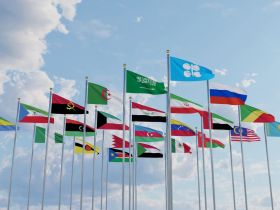Oil futures: Crude drifts lower after muted reaction to OPEC+ delay
Quantum Commodity Intelligence - Crude oil futures Friday were drifting lower, as OPEC's decision to stick with current policy for now was met with a lukewarm reception.
Front-month Feb25 ICE Brent futures were trading at $71.28/b (1748 GMT) versus Thursday's settle of $72.09/b, on track for a small decline on the week.
At the same time Jan25 NYMEX WTI was trading at $67.741/b, versus Thursday's settle of $68.30/b.
OPEC+'s plan to delay the planned output hikes by another quarter was deemed just enough to maintain prices, but the decision to announce a new unwinding plan at the same time was more bearish.
"The market seemed somewhat disappointed or at least indifferent to the extension with ICE Brent settling 0.3% lower on the day, leaving it just above US$72/bbl. This suggests that the market was expecting a more aggressive move from OPEC+," said Warren Patterson, head of ING's commodity research, adding that the move taken by OPEC+ eats quite heavily into the surplus that was expected over 2025.
The group had said in June it would start unwinding around 2.2 million bpd of voluntary cuts from October, which was subsequently deferred until January.
However, the new plan calls for output increases to start from April and spread out over an 18-month period, lasting until September 2026.
Last Friday, Jan24 Brent futures closed at $71.84/b, while Dec24 WTI settled at $67.98/b
US investment bank Goldman Sachs has stood by its $76/b Brent forecast for 2025 as rising global crude inventories outweigh the prolonged tightening impact of reduced OPEC+ supply.
In a note Friday the US bank projected a global oil surplus of around 400,000 bpd next year as robust non-OPEC+ supply growth offsets the group's cuts.
Compensation
The package of compensation cuts that applies to overproduction from Iraq, Russia and Kazakhstan has also been extended until June 2026, although no additional details were provided.
The plan also extends the timeline for the UAE's production increases, which are now tied to wider OPEC+ unwinding.
The OPEC+ move was viewed as defensive against concerns over faltering demand growth, particularly if there is a trade war around tariffs in the new year.
The producer group will be pinning global demand hopes on a stronger US economy, with the Atlanta Fed's model recently upgrading its Q4 GDP growth estimate to a healthy 3.3%.
However, US manufacturing activity has essentially flat-lined for two years, as the Institute for Supply Management's purchasing index for the manufacturing remains below the 50-point threshold marking growth for 24 of the last 25 months.






